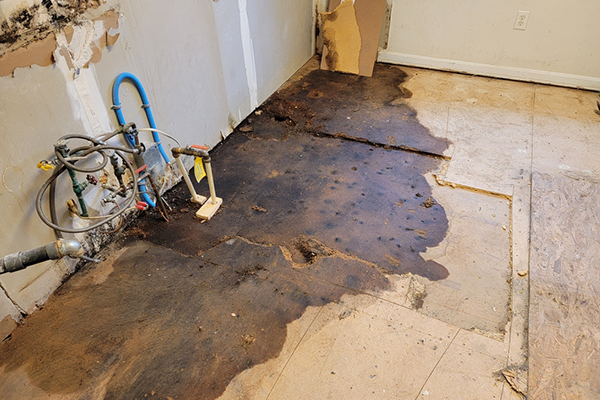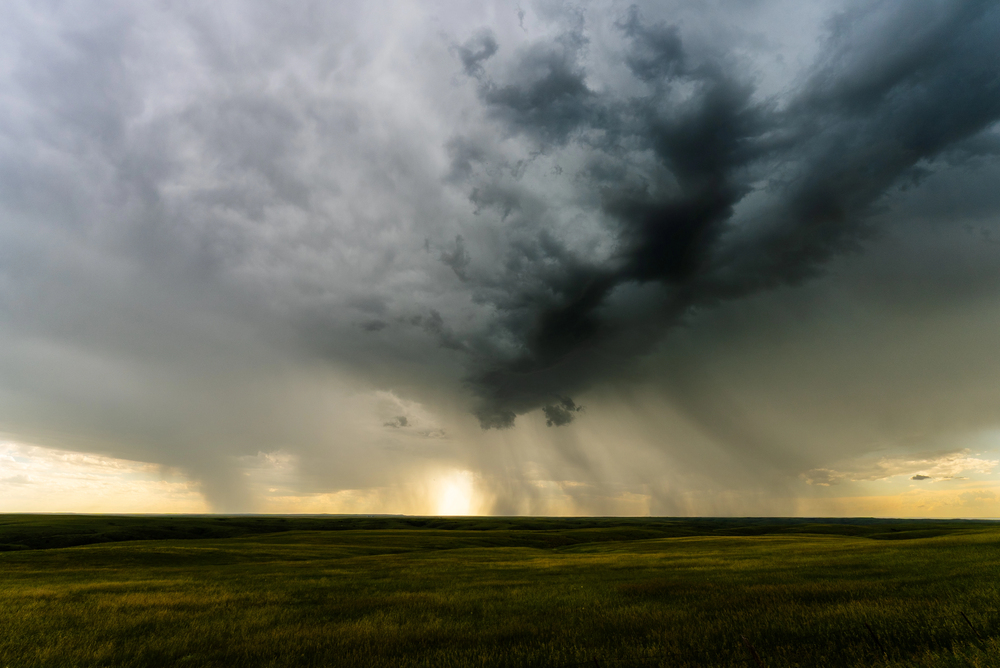Does a Homeowners Policy Cover a Water-Damaged Subfloor That Contains Asbestos?

By: Big “I” Virtual University Faculty
A homeowners client’s ice maker failed and caused major water damage to her kitchen. A claim was submitted and a restoration company was hired to tear up the damaged flooring, cabinets and other affected areas.
When the restoration company started tearing up the vinyl, they noticed—and confirmed with testing—that the subfloor, which was also damaged and needed to be removed, contained asbestos.
The claims adjuster is denying any coverage for the removal of the asbestos and subfloor.
The adjustor sent the agent the following:
Lead/Asbestos– Testing is not covered as there is no coverage for these contaminants-regardless of the property being physically damaged-coverable loss. **building codes do not alter this stance**
EXCLUSIONS
A. Under Part I – Property Insurance Coverages and Additional Insurance Coverages, we will not cover any loss which consists of or is caused by, one or more of the following excluded events, perils or conditions. Such loss is excluded regardless of:
i. the cause of the excluded event, peril or condition;
ii. any other causes of the loss;
iii. whether other causes acted concurrently or in any sequence with the excluded event, peril or condition to produce the loss; or
iv. whether the event, peril or condition occurs suddenly or gradually, involves isolated or widespread damage, arises from natural, man made or other forces, or arises as a result of any combination of these:
1. Enforcement of an ordinance or law:
a. regulating the construction, repair or demolition of a building or an additional structure, including removal of any debris. This exclusion does not apply to the extent that coverage is provided under Additional Insurance Coverages – Building Codes. We will cover loss caused by actions of civil authorities to prevent the spread of a fire caused by a Peril We Insure Against. This exclusion does not apply in the event a partially damaged owner-occupied residence is ordered destroyed under the provisions of a fire ordinance or similar law.
b. requiring any insured person or others to test for, monitor, clean up, remove, contain, treat, detoxify, or neutralize, or in any way respond to or assess, the effects of, pollutants in or on any covered building, other structure or land on the residence premises.
We do not cover the loss in value to any covered building or other structure due to the requirements of any ordinance or law.
This exclusion applies whether or not the property has been physically damaged.
In the client’s policy form, the agent identified the exclusion for asbestos being removed due to code or ordinance of law without property damage, but cannot find the reference to the exclusion if the insured did not know about the asbestos and the damage is the result of a covered peril.
Q: Does the presence of asbestos negate coverage for the removal of a subfloor that was damaged due to a covered loss?
Response 1: I see nothing in the policy language that supports the insurer’s refusal to pay for removal of the subfloor. This is a debris removal issue, not an ordinance or law or testing issue. The policy pays to remove the debris of covered property, and there is nothing that removes the asbestos in the subfloor from what is covered as dwelling.
If the subfloor was damaged by the water and consequently needs to be replaced, the cost to replace it should be covered like all of the other water damage.
If it only had to be removed and replaced because building codes required it, then the exclusion would apply. Additional costs due to testing and removing a subfloor containing pollutants might also be excluded, but the normal cost to replace water damage subflooring should still be owed to the insured.
Response 2: I’ve seen instances when the adjuster refers the wrong policy, and that may have been what happened here. You mention the quote:
Lead/Asbestos– Testing is not covered as there is no coverage for these contaminants-regardless of the property being physically damaged-coverable loss. **building codes do not alter this stance**
However, I don’t think that was a policy quote. I believe that was just a summary statement. There is a potential error made by the claims adjuster.
In Exclusion A. 1. a., the adjustor references:
regulating the construction, repair or demolition of a building or an additional structure, including removal of any debris. This exclusion does not apply to the extent that coverage is provided under Additional Insurance.
But looking at the actual policy, Exclusion A. 1. a. states:
regulating the construction, repair or demolition of a building or an Additional Structure. This exclusion does not apply to loss caused by a Peril We Insure Against with respect to: (i) the damaged portion of a building in the event of a partial loss; or (ii) the entire building in the event of a total or constructive total loss
The policy the adjustor quoted from states there is an ordinance and law give-back under additional insurance, but the actual policy has a different give-back: Ordinance and law coverage resulting from a “Peril We Insure Against” is covered.
Under the policy sold to this insured, the ordinance and law part of the loss may be covered because it was caused by a peril the policy insured against. I suggest getting back to the adjuster and ask them to settle this claim in good faith based on the actual policy sold to the insured.
Response 3: You are correct, as is the adjuster, that asbestos testing, monitoring, cleaning, removing, treating, detoxifying or neutralizing will not be covered under the policy. This is found under Exclusions A. 1. B.
If you are asking if there are any other exceptions to the exclusions which would provide asbestos testing, monitoring, cleaning, removing, treating, detoxifying or neutralizing, I did not see any. Instead, there is this section:
EXCLUSIONS
B. We do not insure for any loss to the property described under Coverages A and B which consists of or is caused by, one or more of the following excluded events, perils or conditions. Such loss is excluded regardless of whether the event, peril or condition occurs suddenly or gradually, involves isolated or widespread damage, arises from natural, man made or other forces, or arises as a result of any combination of these:
4. any of the following:
d. discharge, dispersal, seepage, migration, release, or escape of fuels, chemicals or other pollutants or contaminants from any source;
If any of these 4.a. through 4.h. causes the sudden and accidental escape of water or steam from a plumbing, heating or air conditioning system, a household appliance or an automatic fire protection sprinkler system, within your dwelling, we cover the direct physical damage caused by the water or steam not otherwise excluded.
If loss to covered property is caused by water or steam escaping from a system or appliance not otherwise excluded, we will cover the reasonable cost of tearing out and replacing that particular part of your dwelling necessary to gain access to the specific point of the system or appliance from which the water or steam escaped. We will not cover the loss to the defective system or appliance from which the water or steam escaped or the cost of excavating land.
Because the asbestos did not cause the ice maker failure, I do not see any coverage. Because the ice maker failure does not require the “tearing out and replacing that particular part of your dwelling …to gain access to the specific… appliance…,” I do not see any coverage. The latter language would be applicable if a pipe was leaking and the contractors had to tear out the drywall to reach the pipe.
This question was originally submitted by an agent through the Big “I” Virtual University’s (VU) Ask an Expert service, with responses curated from multiple VU faculty members. Answers to other coverage questions are available on the VU website. If you need help accessing the website, request login information.
This article is intended for general informational purposes only, and any opinions expressed are solely those of the author(s). The article is provided “as is” with no warranties or representations of any kind, and any liability is disclaimed that is in any way connected to reliance on or use of the information contained therein. The article is not intended to constitute and should not be considered legal or other professional advice, nor shall it serve as a substitute for obtaining such advice. If specific expert advice is required or desired, the services of an appropriate, competent professional, such as an attorney or accountant, should be sought.










